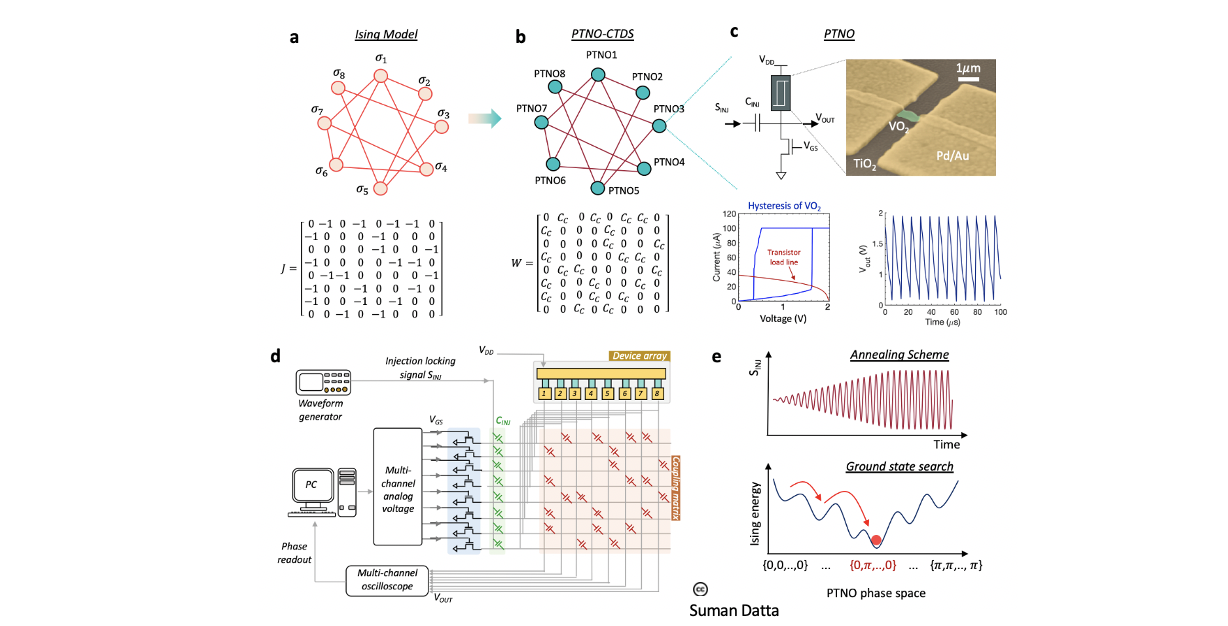
The Paradigm of Collective Computing
14th October 2020
Timing : 1 pm EST
For zoom link to the talks, please email mjgc@mit.edu with your institute email and mention affiliation
For a list of all talks at the NanoBio seminar Series 2020, see here
Suman Datta
Stinson Professor of Nanotechnology
Department of Electrical Engineering, University of Notre Dame
Suman Datta is the Stinson Chair Professor of Engineering at the University of Notre Dame. Prior to that, he was a Professor of Electrical Engineering at The Pennsylvania State University, University Park, from 2007 to 2011. From 1999 till 2007, he was in the Advanced Transistor Group at Intel Corporation, Hillsboro, where he developed several generations of high-performance logic transistor technologies including high-k/metal gate, Tri-gate and non-silicon channel CMOS transistor technologies. His research group currently focuses on emerging device concepts that could enable new computational models. He is a recipient of the Intel Achievement Award (2003), the Intel Logic Technology Quality Award (2002), the Penn State Engineering Alumni Association (PSEAS) Outstanding Research Award (2012), the SEMI Award for North America (2012), IEEE Device Research Conference Best Paper Award (2010, 2011) and the PSEAS Premier Research Award (2015). He is a Fellow of IEEE and the National Academy of Inventors (NAI). He has published over 375 journal and refereed conference papers and holds 185 patents related to advanced device technologies. He is the Director of a multi-university advanced microelectronics research center, the ASCENT, funded by the Semiconductor Research Corporation (SRC) and the Defense Advanced Research Projects Agency (DARPA).
Stinson Professor of Nanotechnology
Department of Electrical Engineering, University of Notre Dame
Suman Datta is the Stinson Chair Professor of Engineering at the University of Notre Dame. Prior to that, he was a Professor of Electrical Engineering at The Pennsylvania State University, University Park, from 2007 to 2011. From 1999 till 2007, he was in the Advanced Transistor Group at Intel Corporation, Hillsboro, where he developed several generations of high-performance logic transistor technologies including high-k/metal gate, Tri-gate and non-silicon channel CMOS transistor technologies. His research group currently focuses on emerging device concepts that could enable new computational models. He is a recipient of the Intel Achievement Award (2003), the Intel Logic Technology Quality Award (2002), the Penn State Engineering Alumni Association (PSEAS) Outstanding Research Award (2012), the SEMI Award for North America (2012), IEEE Device Research Conference Best Paper Award (2010, 2011) and the PSEAS Premier Research Award (2015). He is a Fellow of IEEE and the National Academy of Inventors (NAI). He has published over 375 journal and refereed conference papers and holds 185 patents related to advanced device technologies. He is the Director of a multi-university advanced microelectronics research center, the ASCENT, funded by the Semiconductor Research Corporation (SRC) and the Defense Advanced Research Projects Agency (DARPA).
